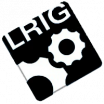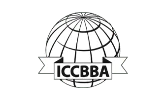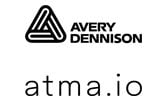If you’re looking into the Eclipse Series it’s likely you’re looking for some way to ensure precise label placement and streamline your processes. Doing so can help you reach larger goals such as increased productivity, throughput volumes and a closer alignment to lean principles.
We teamed up with an automation engineering group to build the Eclipse Series—a series of automated microwell plate labelers. In the end, we landed on a total of three standard models to suit the varying needs of our customers—so how do you know which one is right for your facility?
Below we’ll discuss what features all three models share, what makes them each unique, what applications each is best suited for and the associated costs.
Eclipse series shared features
All three models of the Eclipse series share a number of important features—precision, accuracy, consistent application speed, limited real-estate and reduced operator effort.
When it comes to precision all three models share a label placement tolerance of ±0.35mm—meaning you can rely on any model in the series to precisely and consistently place your labels in the same spot on a plate every time.
Further, information accuracy (as well as label function) are insured with the scan and verify feature.
Expectations for speed can vary somewhat since the operator must manually place the plate in the nest prior to label application—however any model in the series can be expected to print and apply individual labels within a timeframe of 3-5 seconds.
All three models are also fairly compact—capable of fitting on a benchtop—allowing laboratories of nearly any size to accommodate an automated plate label application strategy.
Additionally, operator involvement in the labeling process can be greatly reduced. Due to the long, thin shape of microwell plate labels and the limited surface area on the skirt of the plate—applying labels to microwell plates can be particularly difficult. Especially while wearing latex gloves!
With the Eclipse series, each plate must simply be placed in the applicator prior to label application. This feature alone equips any model in the Eclipse series to achieve the goals most commonly associated with automation—increased throughput speeds, precision placement and reduced operator effort—all with a small footprint.
There a few more shared features beyond those previously highlighted that should be mentioned as well. These features appeal to those with more specific needs:
- The Eclipse series can accommodate either blank labels or pre-printed labels. This allows labs who rely on color-coding or include logo’s on their labels the freedom to do so.
- When the print and apply feature is utilized in combination with suitable labels, they can withstand an array of harsh exposures. The Eclipse series use thermal transfer print technology to ensure image durability.
- Any model is capable of integrating with larger systems to further streamline your processes.
Now that we’re familiar with the features all three models share, let’s take a look at what makes them stand out from on another:
Eclipse 100
The Eclipse 100 is the most bare bones model in the series—but this doesn’t make it any less powerful! Just as with any of the Eclipse Series printer-applicators, you can expect precisely placed labels, reduced operator effort and increased throughput speeds.
The Eclipse 100’s operation is simple—an operator places the plate on the label application area, a label is placed and the plate is removed. If another label needs to be applied, the plate can be turned and replaced to apply a second label (or third or fourth.) If plates vary in height, the applicator can be adjusted manually to easily accommodate the change.
The Eclipse 100 offers fast, precise labeling without added bells or whistles so you can pay for what you need, and only what you need. We mainly recommend this labeler to labs working with plates of a single height that only require one label—but if you plan on purchasing multiple applicators or are working with extremely small volumes it may still be a good fit.
Eclipse 200
The Eclipse 200 offers all the same features as the 100, but is better suited to applications where labels are applied to multiple sides of your plates.
Just like the 100 model, once the plate is placed in the applicator a label is applied. However, on the 200 model the plate nest is able to rotate—allowing a label to be precisely placed onto additional sides. This is what makes it so much better suited to applications where multiple labels are applied to individual plates—especially medium-large applications.
With the added ability to apply labels to multiple sides of the plate, not only precisely but at a consistent speed, ensures the amount of time and effort put into applying labels to plates in your facility will be dramatically reduced.
It must be kept in mind however, that the height must be manually adjusted on this model as well—so unless you can spend some time grouping plates by height and adjusting the applicator between batches—the 250 may be a better fit.
Eclipse 250
Lastly, the Eclipse 250 is equipped with all the same features as the 100 and 200—as well as the ability to automatically adjust to varying plate heights.
The operation is once again simple—the operator places the microwell plate in the applicator nest, if needed the applicator will adjust to a new plate height before a label is applied. The 250 will also automatically label up to all four sides if that suits your application. Once all labels are applied, the plate can be removed and replaced with another.
When you’re working with microwell plates of varying heights and consistency in throughput speeds is crucial—the Eclipse 250 is going to be a good fit for you—even when multiple labels are being applied to your plates.
Compare and contrast features
| Microwell Plate Label Automation | Eclipse 100 | Eclipse 200 | Eclipse 250 |
| Plate Presentation Method | Manual | Manual | Manual |
| Automation Capable | Yes | Yes | Yes |
| Automated Plate Rotation | No | Yes | Yes |
| Automatic Height Adjustment | No | No | Yes |
| Accommodates Time Sensitive Information | Yes | Yes | Yes |
| Label Scan Verification | Optional | Optional | Optional |
What does the eclipse series cost?
All models in the Eclipse series—as with any automated labeling equipment—are investment pieces. Over time you should see a return on your investment as your throughput increases and excess labor can be re-allocated to more value added processes.
The main purpose for supplying three different models of varying capabilities and cost is to ensure a range of facilities can find a solution that’s not only suited to their needs—but one they can justify. When a suitable solution is purchased the likelihood of seeing ROI is increased—and it’s also likely you’ll see those returns much faster.
So, what does it cost to invest in the Eclipse series and how can you justify those costs?
Starting costs for each model are as follows:
Eclipse 100: $28,000
Eclipse 200: $34,000
Eclipse 250: $40,000
The cost of your Eclipse series equipment will vary—not only by model—but the amount of customization necessary to fully accommodate your solution. We firmly believe that a “cookie-cutter” solution doesn’t exist for automated labware labeling. Regardless of what model you choose some customization is likely to be performed in order to optimize performance.
What this means in terms of cost is that you most likely won’t end up spending the base price for your Eclipse series plate label applicator due to the customization necessary for most applications.
Consumable costs must be considered as well. Label and ribbon costs aren’t accounted for in the base cost of your equipment—and these costs will be recurring.
Cost justification
Choosing the best solution for your application is very important to ensure you see returns as quickly as possible. While it may seem like you’ll always make up for the lowest cost model fastest—this isn’t exactly true when all factors are considered.
For example, a laboratory working with a single plate size, labeling only one side of the plate who invested in the Eclipse 100 might see returns faster than a lab processing similar volumes of plates of varying heights who also invested in the Eclipse 100.
While in both situations the Eclipse 100 can improve throughput speeds and reduce operator effort compared to hand labeling—the second lab would find value in the higher investment 250 model since less time will be spent adjusting the equipment between plates of different sized plates. When labor costs and throughput interruptions are taken into account it may justify the increase in cost as well.
Overall—the Eclipse series of automated plate labelers provides three options capable of providing fast and precise label application to microwell plates. Each base model is designed to accommodate different needs to ensure your investment aligns with what’s most valuable to your facility.
Connect with our labelling experts today
Blog article form
"*" indicates required fields













